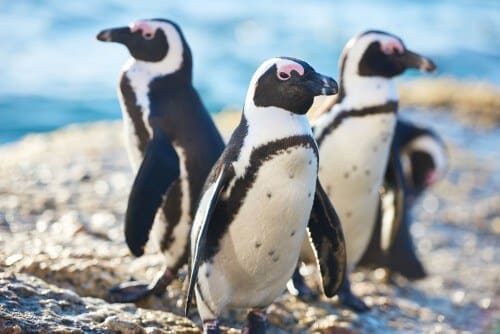The temperature in Antarctica can plunge to minus 90 degrees Celsius, yet the penguins living there do not freeze, thanks to several properties that make them superhydrophobic.

By: Yael Helfman Cohen The temperature in Antarctica can plunge to minus 90 degrees Celsius, and yet the penguins living there do not freeze, thanks to a number of properties that make them superhydrophobic.
Prof. Kavehpour, P) ), from the Department of Mechanical Engineering and Aeronautics at UCLA University, became interested in the feathers of penguins when he watched a...nature movie.
"I noticed that the penguins come out of very cold water, and live in very cold temperatures, I was surprised to see that no ice had accumulated on their feathers."
This curiosity motivated scientific research, and a research team was established that also includes a penguin expert. The researchers used an electron microscope to analyze the penguin's feathers, and discovered that the feathers contain small pores that trap air and make the surface extremely water repellent. The researchers also noticed that the penguins, like other waterfowl, lubricate their feathers with an oil produced in a gland located near the base of the tail.
When there is water on the feathers, the drops roll off or are stirred up by the penguins. The drops take on a spherical shape that repels the formation of ice, due to reducing the contact area with the body, and impairing the flow of heat. Prof. Kabpour compared the flow of heat to movement. Heat does not flow well in the transition from the large section of the middle of the drop to the smaller section located at the point of contact of the drop with the feathers, similar to the difficulty of moving traffic from two lanes to one...
It was also discovered that in the penguins that stay in a warmer climate, the small pores in the feathers do not exist, and the oil they use is of a different type, which does not repel water.
The water-repellent feature of the feathers of the penguin living in Antarctica, could be used in the future to design water-repellent airplane wings to prevent the accumulation of ice, which is a significant factor in air accidents. In the world of aviation, anti-icing chemicals are currently used for this purpose. This process is of course expensive, time consuming and very polluting, compared to the natural solution.
"It's a bit ironic that a bird that doesn't fly will one day be able to help Aviron fly safely" - this is how Prof. Kabpour concluded.
